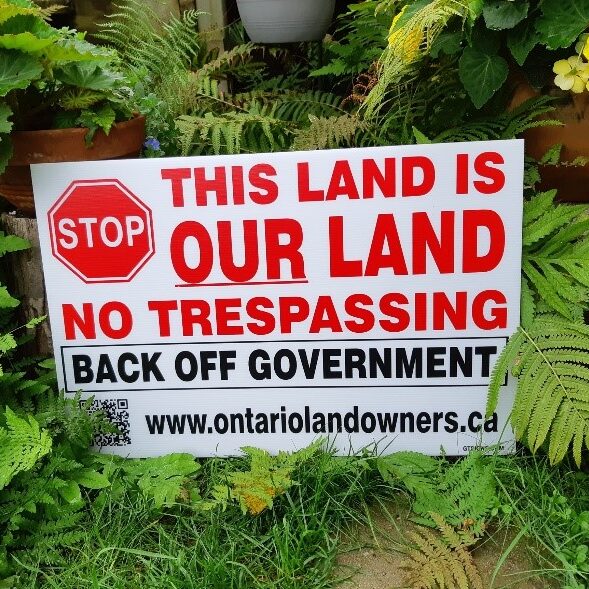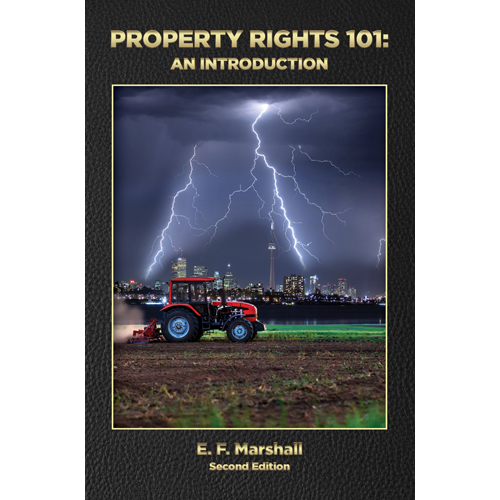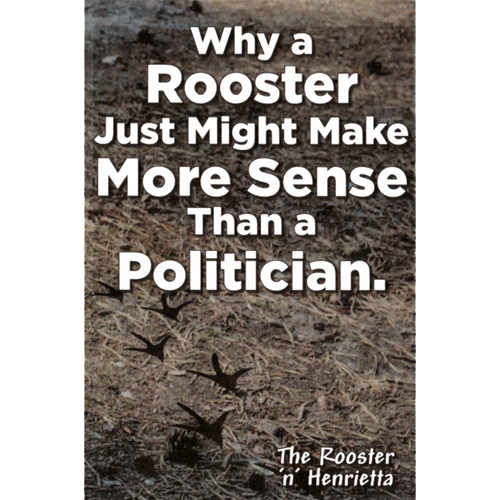Bill 100 by Tom Black
- 2016-03-01
- By admin
- Posted in Latest News

Tom Black
At first glance, most people will think that there is not much to worry about concerning Bill 100, “Supporting Ontario’s Trails Act” but the Ontario Landowners Association (OLA) has learned the hard way, that if you let bad legislation pass, then the only way to fix it is in court rooms at great expense to the individual.
Just for information purposes, in this Act, all conditions explained in Section 12, apply ONLY to private property. This is explained in Section 13 where it says, “Section 12 does not apply to any land owned by the Crown or to lands administered under the Conservation Authorities Act, the Public Lands Act or the Provincial Parks and Conservation Reserves Act, 2006”. I talked to people from the Ontario Trails Council (OTC), the people who want this bill passed, and they told me that there are about 2500 trails in Ontario that total about 80,000 km. 20,000 km. of those are on private property.
So here are some of our concerns. If we agree to accept a trail easement on our property, then Section 12 describes all the eligible nominees or eligible bodies that can potentially share this easement. Under Section 12 (1) there are thirteen subsections (a) through (m) describing who can be an eligible body to register the easement. Conservation Authorities, Crown Agencies, Municipalities, and Native and Aboriginal groups are all eligible as well as subsection (k) which mentions entities from the United States. (When talking to Minister Coteau’s office on Friday, they informed me that those entities are Conservation Land Trusts from the USA).
In Section 12 (1) (m) it refers to “any other person or body prescribed by the regulations made under this Act”. None of us can predict what the regulations for this Act will look like, because they will be written in the back rooms by the bureaucrats with no oversight by the public or the property owners, until they become law and one is forced to deal with them in court.
Now we move onto Section 12 (2) that describes the eligible body “as one who is acceptable to become a registered owner of an interest in land”.
Section 12 (3) says “an owner of land may grant an easement, with or without covenants, to one or more eligible bodies. Section 12 (4) confirms that eligible bodies can then convey land to other bodies. Section 12( 6) says “the eligible body shall register the easement against the land affected in the proper land registry office and, once registered, the easement and any covenants contained in the easement, run with the land against which it is registered”. In Section 12(8) it says that eligible bodies can transfer its rights to another eligible body. Now this is where the property owner must be very careful and put written conditions on the use of the trails. There is nothing in this Act that requires the entities who make an agreement with property owners to fully explain the consequences of signing up for an easement. There is also nothing in this Act that requires a written ‘wet-ink’ signed contract with witnesses to protect the property owner who may not understand the words of the contract. There is nothing in this Act which explains that once the owner has agreed to an easement, although they still own the land, they have lost the right to use the land as they want.
For any of those who think that you can change an easement, which is a contract, Section 13 makes it very clear when it states, “an eligible body may enforce an easement that is registered on title to the land, including any covenants contained in the easement against the owner of the land and against any subsequent owner of the land, against which it is registered.
The folks from the OTC insist that they are content to continue with the traditional handshake agreements that have served us well in the familiar spirit of community and insist that they do not need a registered easement to continue their trails network. However, nothing in this Act spells out this option clearly. It would seem then, that the only reason to sign an easement would be to help extend control for the Ministry of Natural Resources, Municipalities, Conservation Authorities, and Conservation Land Trusts over private property. Although the OTC has heard the OLA’s concerns, they say that they would not withdraw their support for the Act because they had worked on it for too long. The OLA favours withdrawal of the Act to allow time for proper review and consultation.
If any group comes knocking on your door looking for permission to use your land for their trails, it is in your best interests to have all the details of the agreement and then take that contract to your lawyers and have them confirm that you are protected, before you sign. This bill seriously underestimates the physical, emotional and economic connection that rural people have to their property. This bill by its vagueness and association with different entities has led people to believe that there was an intentional motive to gain permanent access to rural land. One thing for sure, most people on the rural roads know that when you mention Conservation Authorities, Private Property, and Easements in the same Act, nothing good will come of it.
Search:
Categories
Archives
- April 2024
- January 2024
- December 2023
- November 2023
- August 2023
- July 2023
- June 2023
- May 2023
- April 2023
- March 2023
- February 2023
- January 2023
- December 2022
- November 2022
- October 2022
- September 2022
- August 2022
- July 2022
- June 2022
- May 2022
- April 2022
- March 2022
- February 2022
- January 2022
- December 2021
- November 2021
- October 2021
- September 2021
- August 2021
- July 2021
- June 2021
- May 2021
- April 2021
- March 2021
- February 2021
- January 2021
- December 2020
- November 2020
- October 2020
- September 2020
- August 2020
- July 2020
- June 2020
- May 2020
- April 2020
- March 2020
- February 2020
- January 2020
- December 2019
- November 2019
- October 2019
- September 2019
- August 2019
- July 2019
- June 2019
- May 2019
- April 2019
- March 2019
- February 2019
- January 2019
- December 2018
- November 2018
- October 2018
- September 2018
- August 2018
- July 2018
- June 2018
- May 2018
- April 2018
- March 2018
- February 2018
- January 2018
- December 2017
- November 2017
- October 2017
- September 2017
- August 2017
- July 2017
- June 2017
- May 2017
- April 2017
- March 2017
- February 2017
- January 2017
- December 2016
- November 2016
- October 2016
- September 2016
- August 2016
- July 2016
- June 2016
- May 2016
- April 2016
- March 2016
- February 2016
- January 2016
- December 2015
- November 2015
- October 2015
- September 2015
- August 2015
- July 2015
- June 2015
- May 2015
- April 2015
- March 2015
- February 2015
- January 2015
- December 2014
- November 2014
- October 2014
- September 2014
- August 2014
- July 2014
- June 2014
- May 2014
- April 2014
- March 2014
- February 2014
- January 2014
- December 2013
- November 2013
- October 2013
- September 2013
- August 2013
- June 2013
- April 2013
- October 2012
- May 2012
- September 2011



